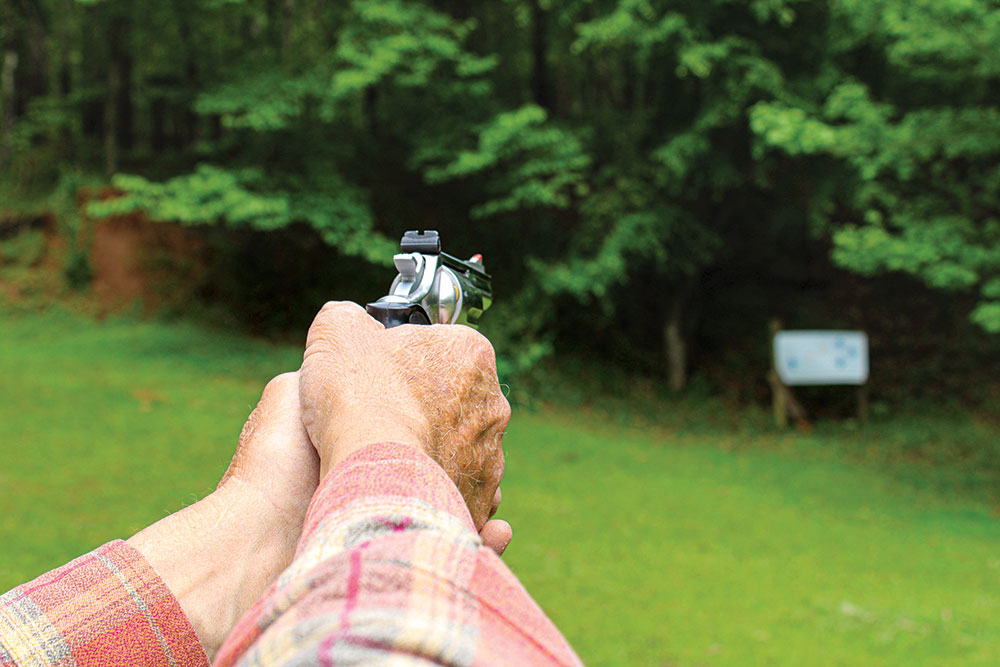Reloading skills are critical to successful self-defense.
When folks get into firearms and self-defense, the first thing they put a lot of thought into is the gun, followed immediately by learning how to shoot it accurately. In doing so, they fire quite a lot of rounds … which leads to quite a few reloads.
It’s too bad most folks don’t use any of that reload time as training, because reloading skills are just as important as accuracy.
In fact, gun manipulation might be even more important than accuracy. Any person can point and pull a trigger to stop a bad guy, but it takes a skilled defender to successfully fight off assailants in an attack for which point-and-shoot doesn’t end the situation. In these scenarios, folks need to understand movement, communication, cover and firearm manipulation—which includes clearing and reloading.
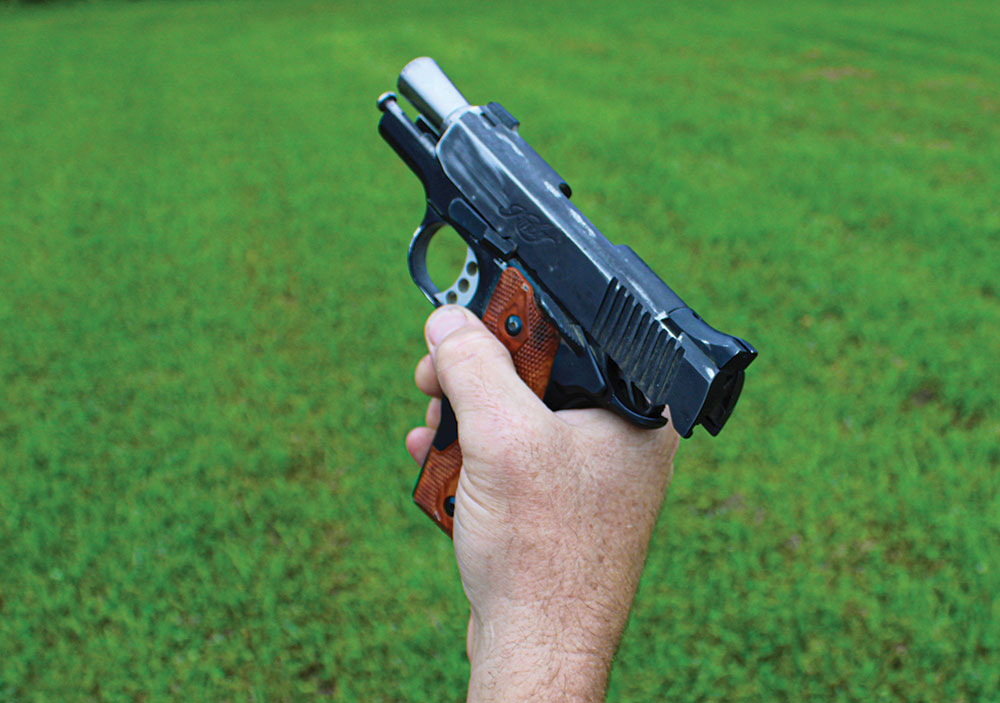
And all this needs to be performed under the extreme stress of a potentially life-and-death attack.
This is why experts tell beginners to purchase a decent self-defense handgun and holster rig and then spend two to three times that amount on training—just to start. Being truly prepared for whatever comes along is a lifelong journey that requires commitment and dedication, but it’s the price that must be paid to protect the “sheep” from the “wolves.”
Understanding and mastering the various types of reloads should be at the top of every defender’s training list.
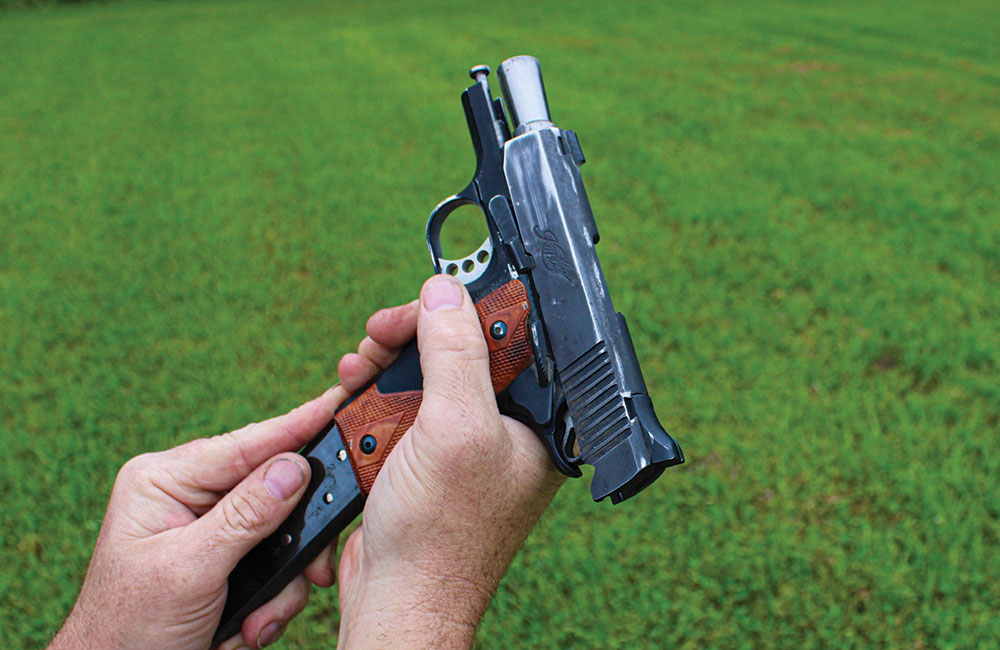
Now, the first thing to remember is that if a person isn’t shooting, he or she should be moving or reloading. If possible, reloads should be performed behind cover. With practice, reloads can be completed within two or three seconds. However, even during that small amount of time, one becomes quite vulnerable.
“Being truly prepared for whatever comes along is a lifelong journey that requires commitment and dedication, but it’s the price that must be paid to protect the ‘sheep’ from the ‘wolves.’”
Reloads should also be conducted high enough to be within the field of vision—but without blocking the eyes from seeing potential threats. This basically means about chin high with semi-autos to about belly or chest high with revolvers, each of which requires different steps for both speed and tactical reloads. And, while there are other types of reloads, they’re typically used for competition.
However, this conversation is about self-defense and survival. Competitions can make a person a great shooter, and there’s nothing wrong with becoming a competition shooter. But competitions have safety concerns that don’t come up on the street, and they have rules that don’t apply in a fight, such as that a partially loaded magazine must be put away before firing after a tactical reload.
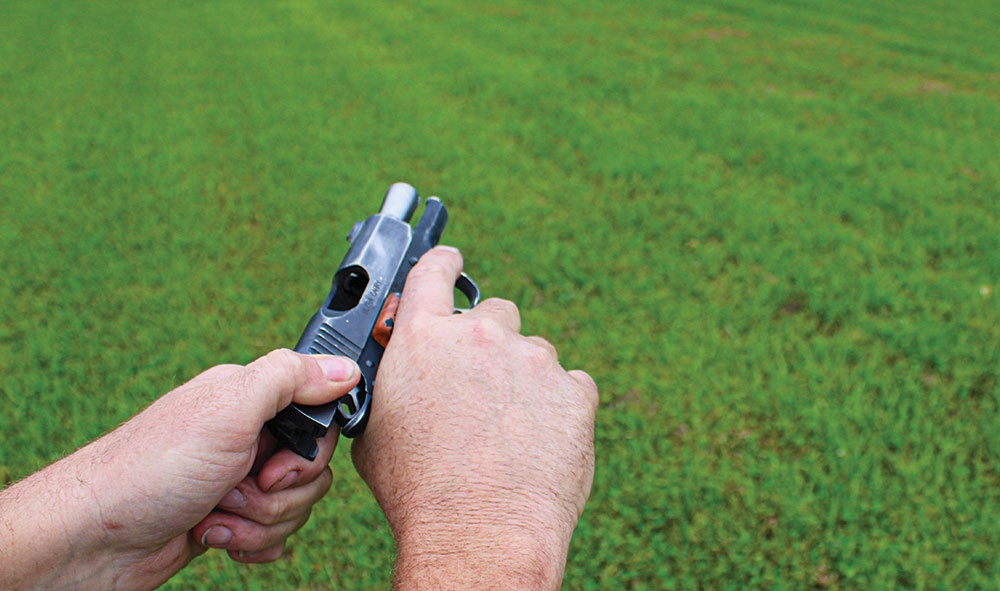
The Need for Speed
The concept behind a speed, slide-lock or emergency reload is simple: When the gun is empty, the shooter reloads as quickly as possible to get back into the fight. Of course, the actions of a speed reload must be conducted quickly, but smoothly, using gross motor skills … because fine motor skills typically disappear under stress.
“Shooting paper targets isn’t fighting, and fighting is what one does on the street or when defending one’s home. To be effective, skills must be learned and applied, and the mind must always be moving.”
Semi-auto pistols. With a semi-auto pistol, most of which lock back upon firing the last round, depress the magazine release while raising the gun to about chin level just a little to the shooting hand’s side. This helps the magazine fall clear of the gun to the ground. At the same time, reach for the spare magazine, whether it’s in a holster, pouch or pocket. As the magazine clears, index a finder along the front to guide it into the well before seating the magazine with a final “bump” to ensure it’s locked. Then, either release the slide lock or pull the slide to the rear and let it go to put the gun into battery.
The fastest method to get a pistol back into battery is the slide lock. However, it’s a slide lock, not a slide release.
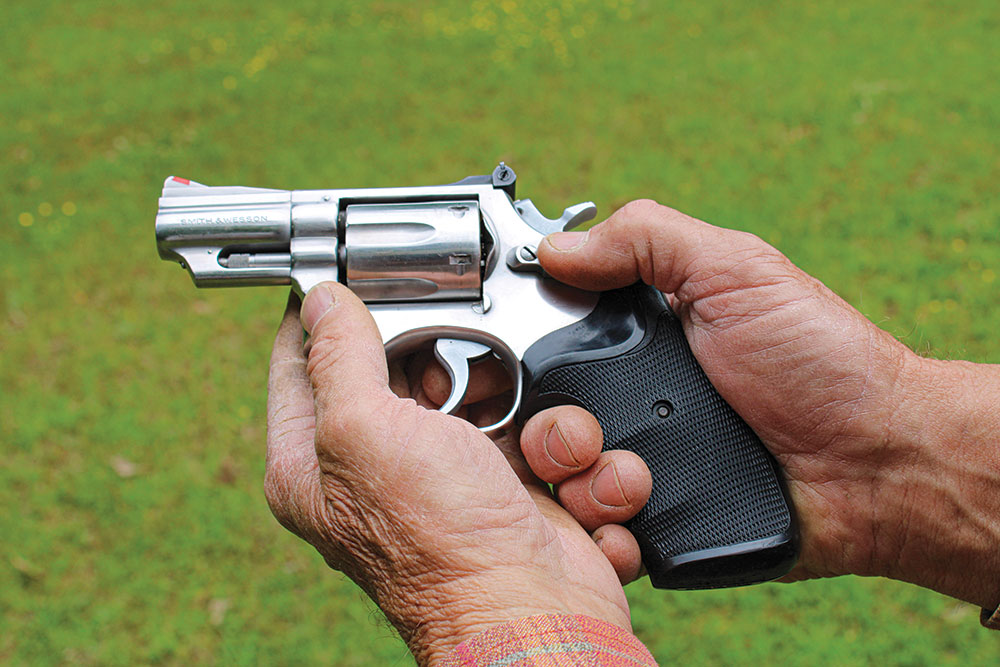
On many pistols, the slide lock is large enough for easy release, such as on a 1911. However, on some pistols, such as Glocks, the slide lock can be a bit difficult to hit due to its size. Because of this, most experts recommend pulling the slide for release just in case the shooter is, for whatever reason, using a different pistol than normal. Fumbling with an unfamiliar slide lock could get a person killed.
Revolvers. Revolvers require technical procedures for a speed reload, meaning that practice is even more important. When all the rounds have been fired, the shooter must open the cylinder, remove the empty cases, reload and then close the cylinder to get the gun back to firing condition.
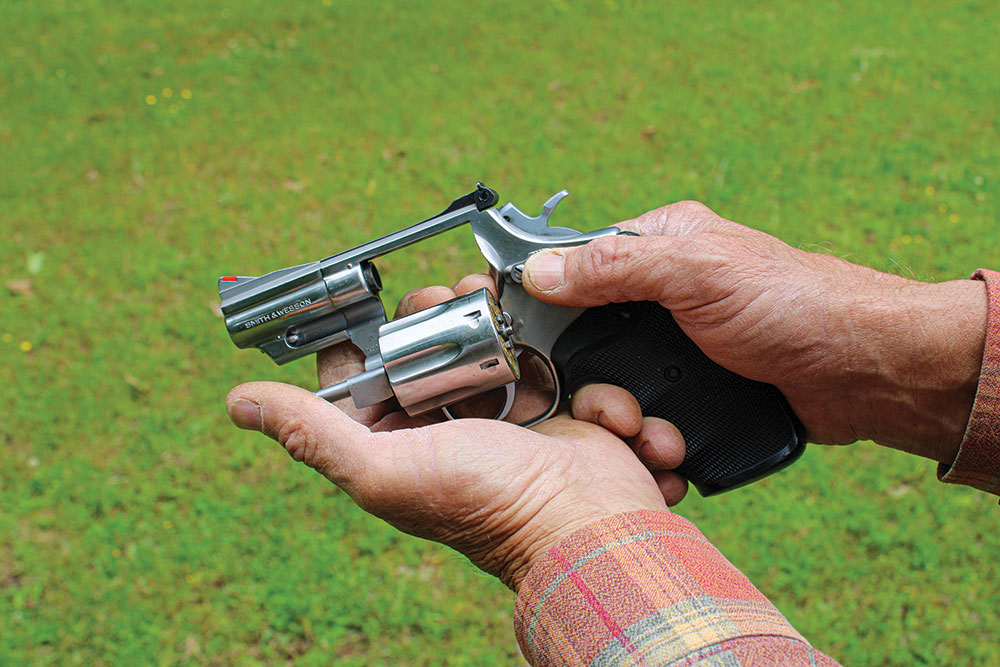
A revolver reload begins in a two-handed grip, with the right hand depressing the cylinder release. The left hand should turn the gun barrel at an angle up while its middle two fingers push the cylinder out of the frame. Then, the left thumb depresses the ejector and pushes the cases out as the right hand reaches for the loader, which, for a revolver, should be on the strong side.
If necessary, the right hand can help eject the spent cases before reaching for the loader. The gun is then rotated toward the ground so the new rounds can slide into the chambers before releasing the loader and letting it drop. Finally, use the left thumb to close the cylinder and bring the gun up to a shooting position.
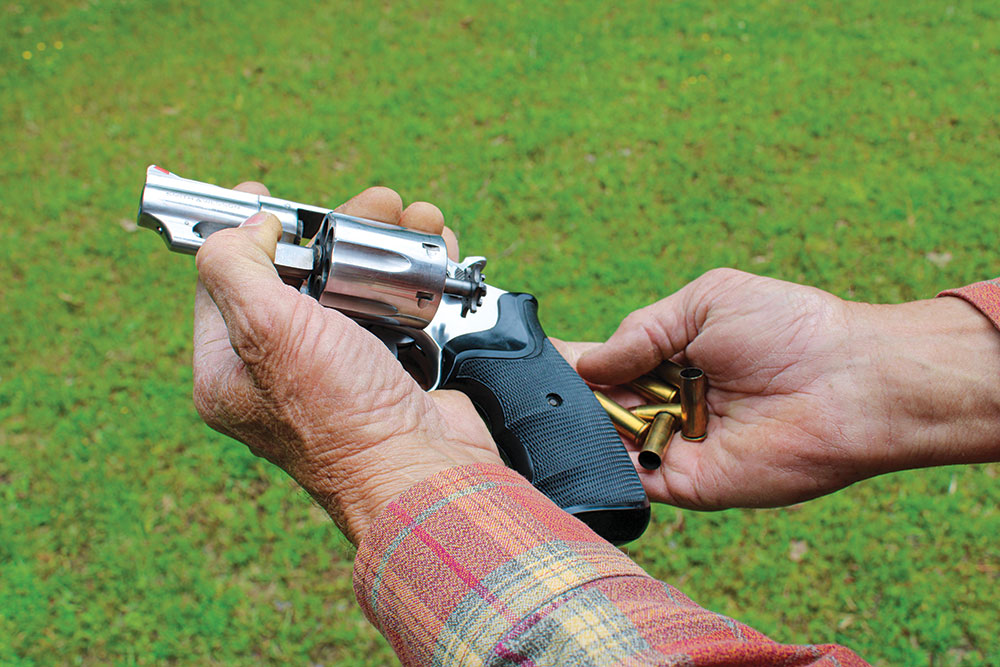
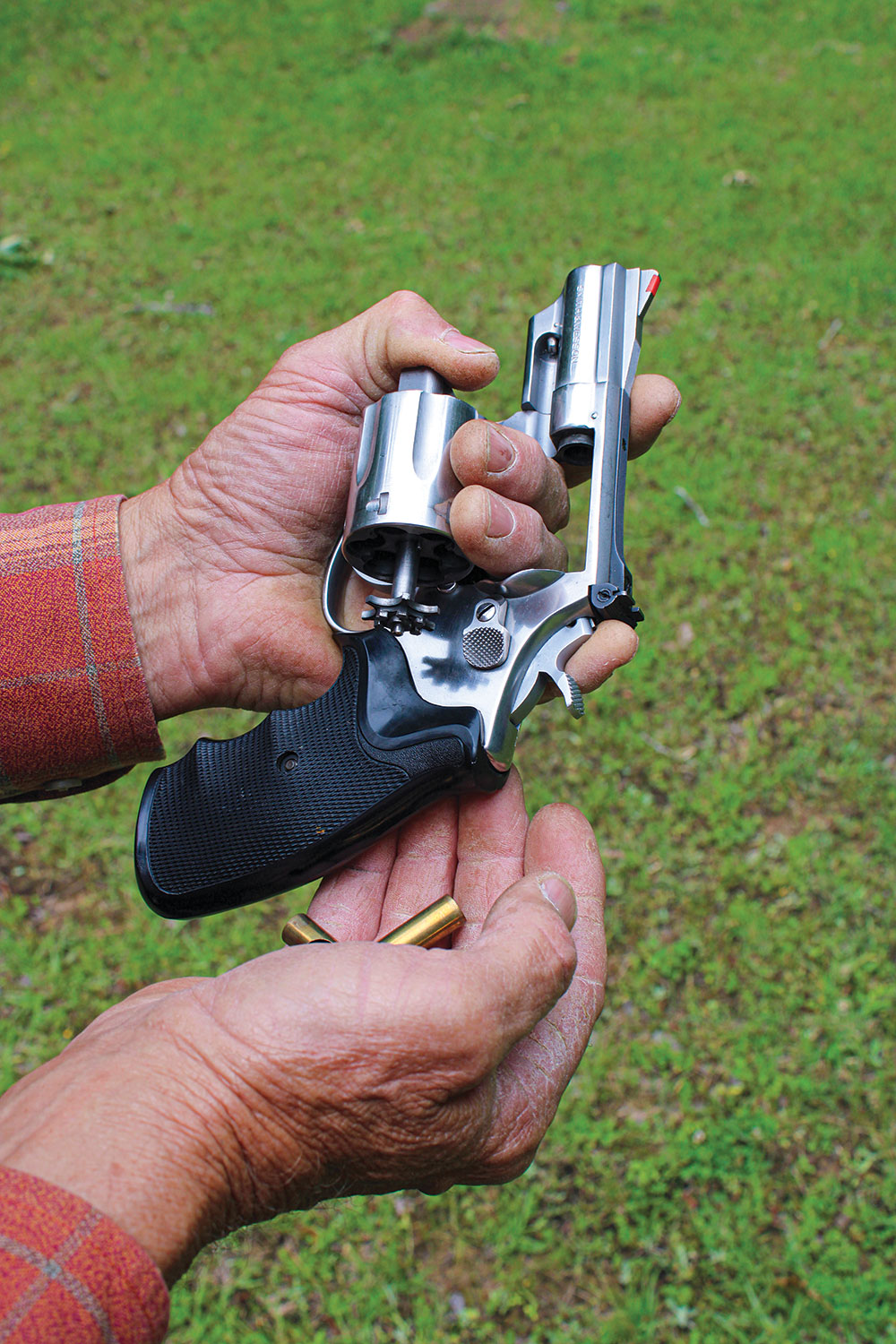
Going Tactical
The tactical reload is for when an attack seems to be over, but the situation calls for being fully prepared in case it’s not. Shots have been fired, and the gun isn’t fully loaded, so the defender swaps the partial magazine with a full magazine. However, the partial magazine should be retained—just in case the assault flares up again and the rounds are needed.
“With practice, reloads can be completed within two or three seconds. However, even during that small amount of time, one becomes quite vulnerable.”
For this manipulation, keep the pistol in a “ready” position as the support hand draws the spare magazine in the same method as a speed reload, with the first finger indexed along the front of the magazine. However, as the full magazine comes up, slip it between the index and middle fingers so that when the partial magazine drops, it can be caught in the webbing between the forefinger and the thumb. Then, shift and seat the full magazine and go to a partial two-handed grip to scan the area. If it’s still clear, drop the partially full magazine into a pocket or slip it inside your waistband. The point of this is to keep it from being confused with other full magazines while keeping it available if needed.
A revolver tactical reload is more difficult, particularly because there are a couple of different theories regarding the best method.
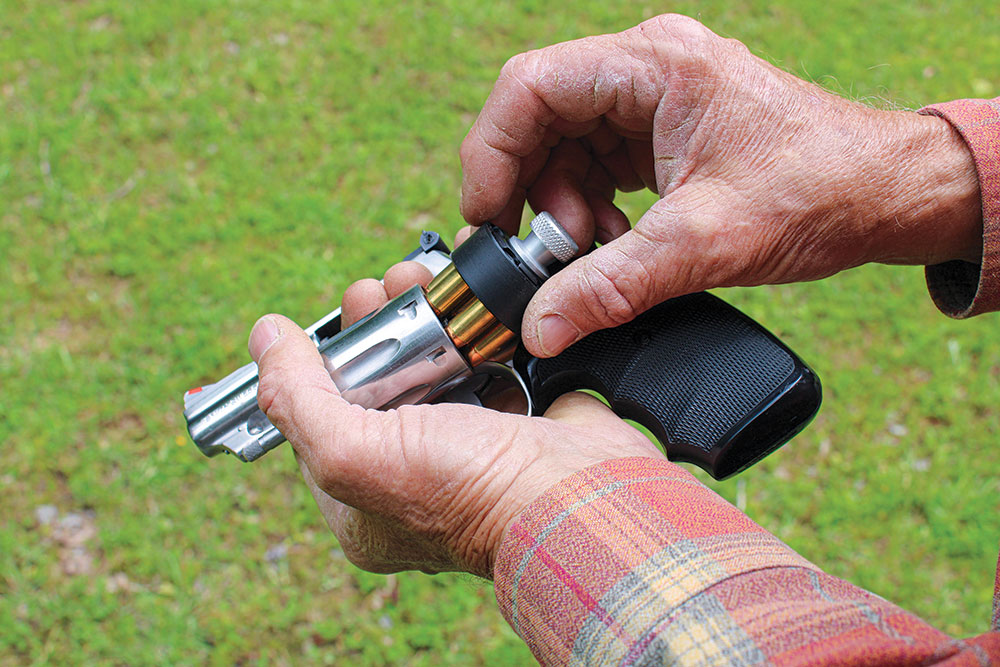
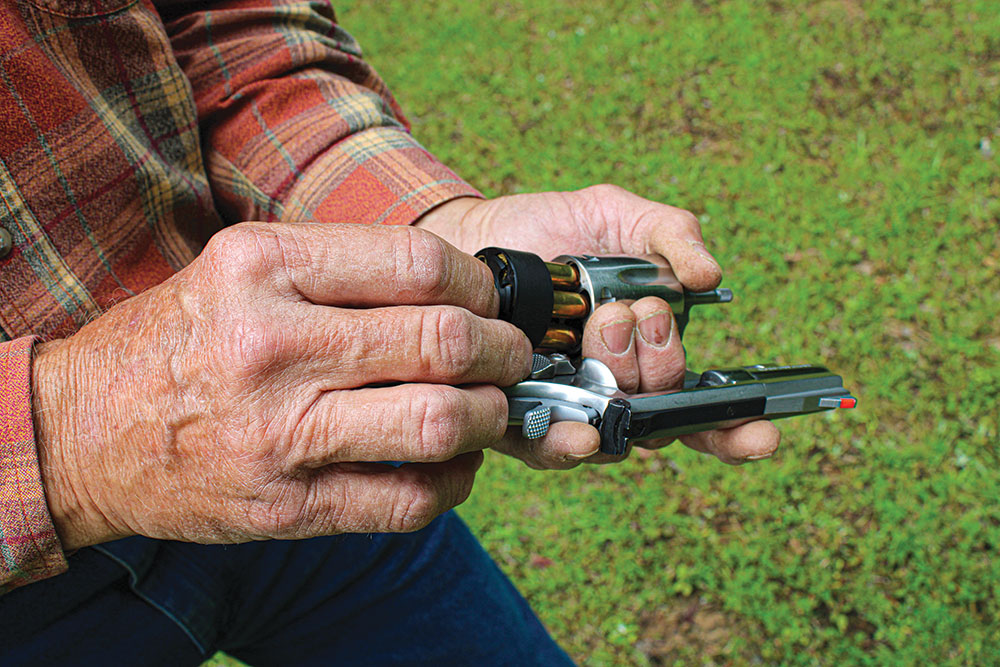
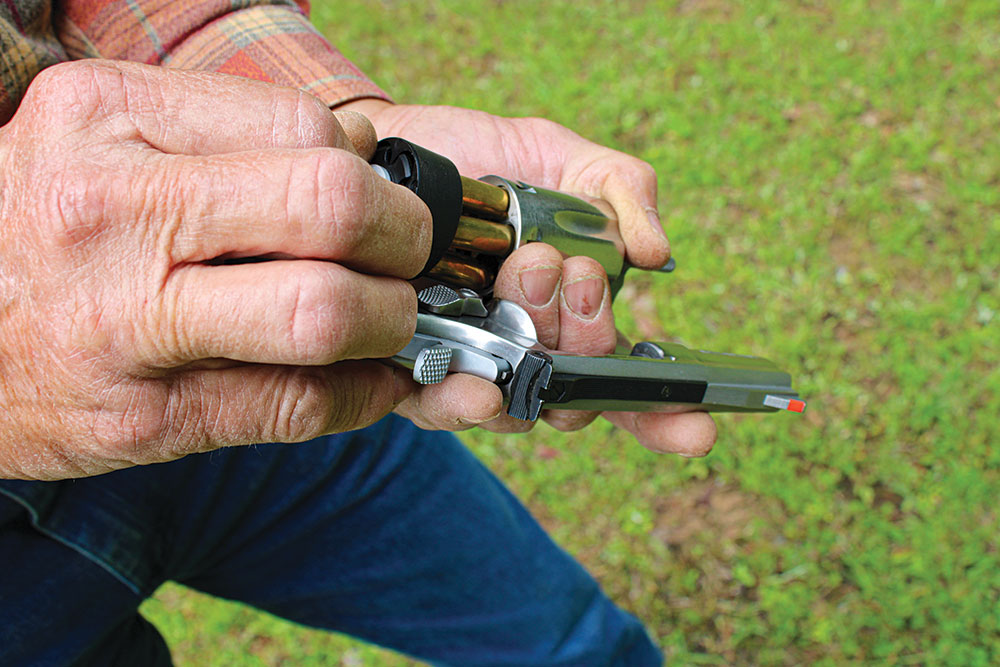
One method involves opening the cylinder and gently pressing the ejector rod part way and releasing it to allow full loads to drop back into the cylinder while spent cases stay up. From there, the shooter picks out the brass and reloads from a speed strip or loose rounds. The problem with this method is the chance of fumbling the live rounds, forcing the shooter to load all chambers and dropping what could later become needed ammunition.
Today, most experts recommend performing a tactical reload for a revolver in much the same way as a speed reload—with an additional step: Instead of dropping everything to the ground, the shooter catches both the live rounds and spent cases and slips them into a pocket before using a speed loader to get the gun ready to run. The idea is that the shooter will be able to tell the difference between the two in the pocket if those rounds become necessary.
Of course, practice is required to flawlessly perform a reload—a lot of practice—which can easily be conducted when at the range or at home. In fact, it’s often smart to learn a new skill with dummy ammunition. In either case, just start slowly and smoothly, and speed will come.
Pressure and Tips
Once a person becomes proficient at reloads, the last step in the learning process is to make everything more difficult by adding pressure. Pressure is important in all types of firearm training, because attackers aren’t going to step back and provide an opportunity for you to get better prepared. In addition, most people don’t understand the tremendous anxiety involved in such a situation.
This isn’t a close call in a car or tripping while walking; this is an evil person trying to do harm to others without regard for the consequences. Consequently, using a timer or a partner can add pressure to these drills, whether the shooter uses dummy ammo or live rounds at the range.
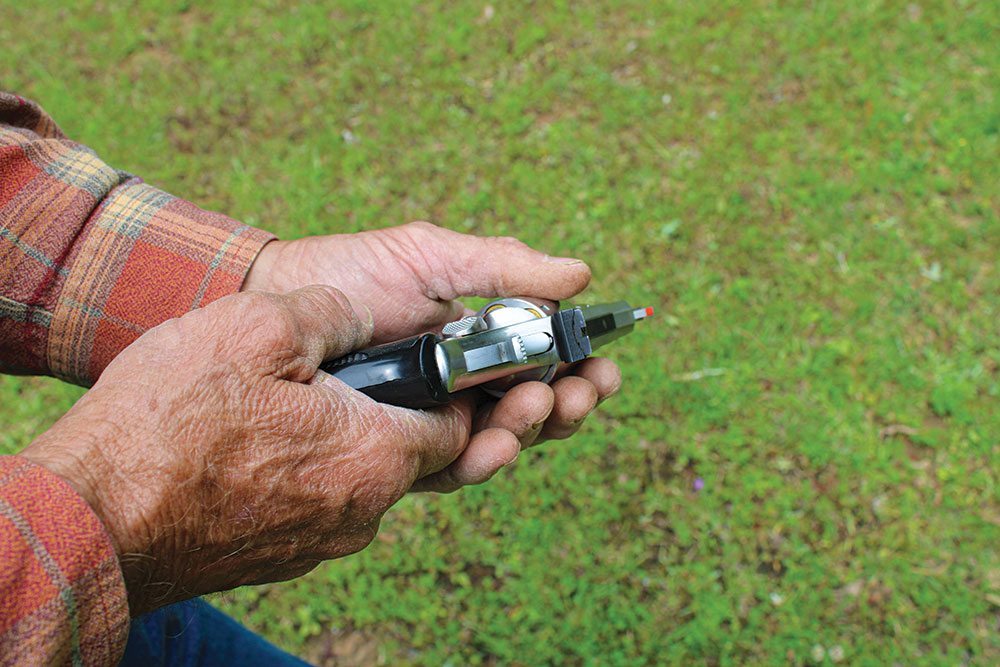
The timer is pretty self-explanatory: The shooter constantly tries to get faster each time they perform a speed or tactical reload. This is a good way to start at home—using dummy ammo.
After proficiency’s been obtained, real pressure can be added with a friend screaming at the shooter—safely and from behind. Few folks understand the impact that the increased pressure will have on this situation … until they experience one. Hands will fumble when a voice hits full throttle right behind their head.
Also consider doing this randomly at the range—with consent—to provide an element of surprise. Almost anything becomes manageable, if not normal, when it happens all the time.
More to Think About
Ammo placement
Another factor folks need to think about is spare ammo placement.
Sure, it’s easy to drop a magazine or speed loader into a pocket, but you must also be able to get it out quickly, regardless of the position your body is in at the time. Getting a spare mag out of your front pants pocket when you’re sitting is not easy or quick.
Clothing considerations
It’s always advisable to practice when wearing everyday clothing that you’d be likely to wear when you carry your gun.
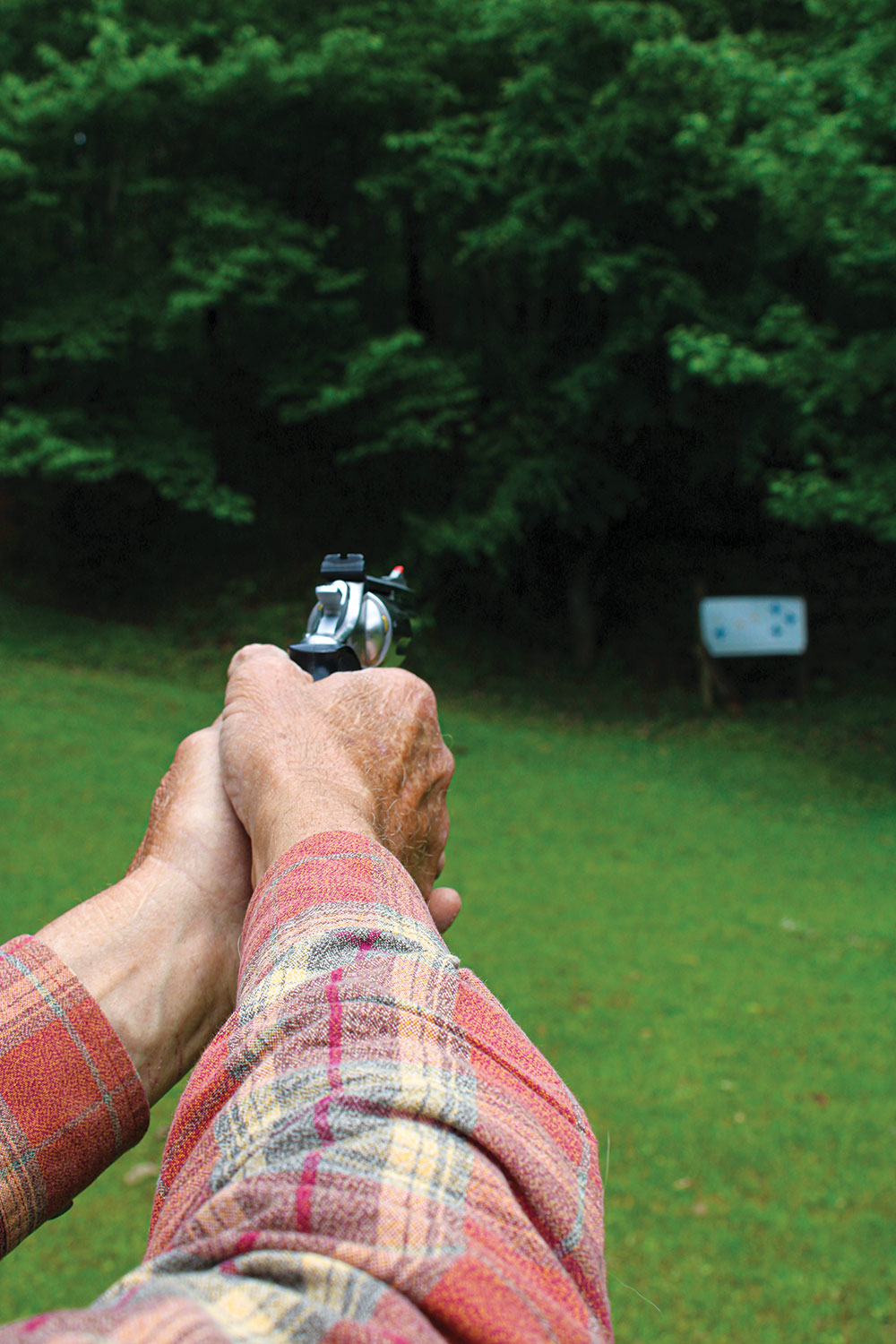
Using dummy ammo or doing repetitions in front of a mirror work well for this. In fact, it wouldn’t be a bad idea to add this to your standard draw practice anytime something has changed—such as the gun, holster or clothing choices. Those who are used to wearing jeans and a T-shirt might want to practice drawing and reloading the day they dress up in more formal attire.
Carrying the Ammo
On which side should spare ammo be carried?
That answer depends on which hand’ll be loading the gun: Spare magazines should be on the support hand side, while speed loaders should be within reach of the strong hand. Those who carry a revolver in a pocket can even slide a speed loader underneath the gun, thus providing extra ammo and helping break up the gun’s outline in your pocket. Just make sure magazines and loaders are accessible and can’t pick up debris where they’re located.
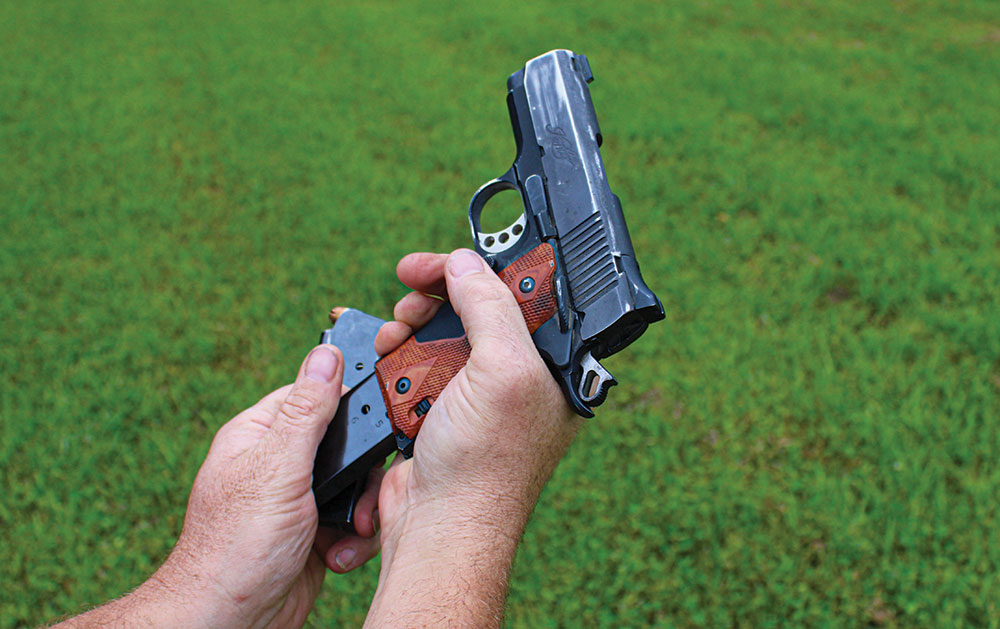
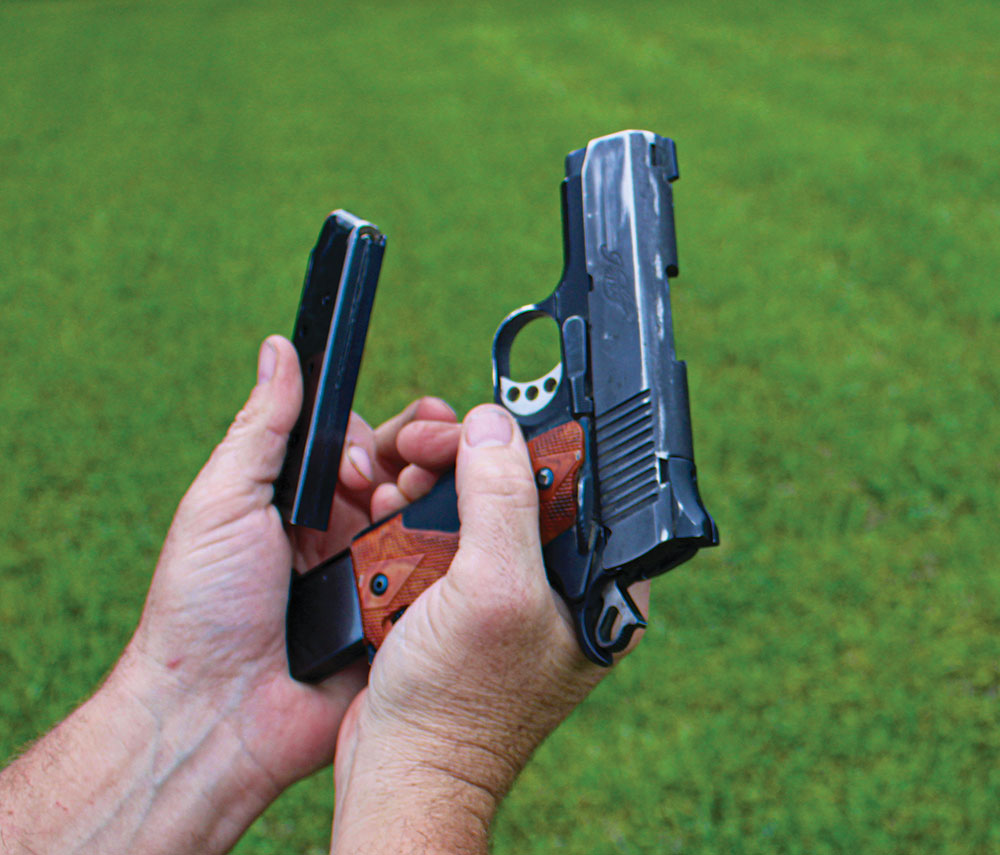
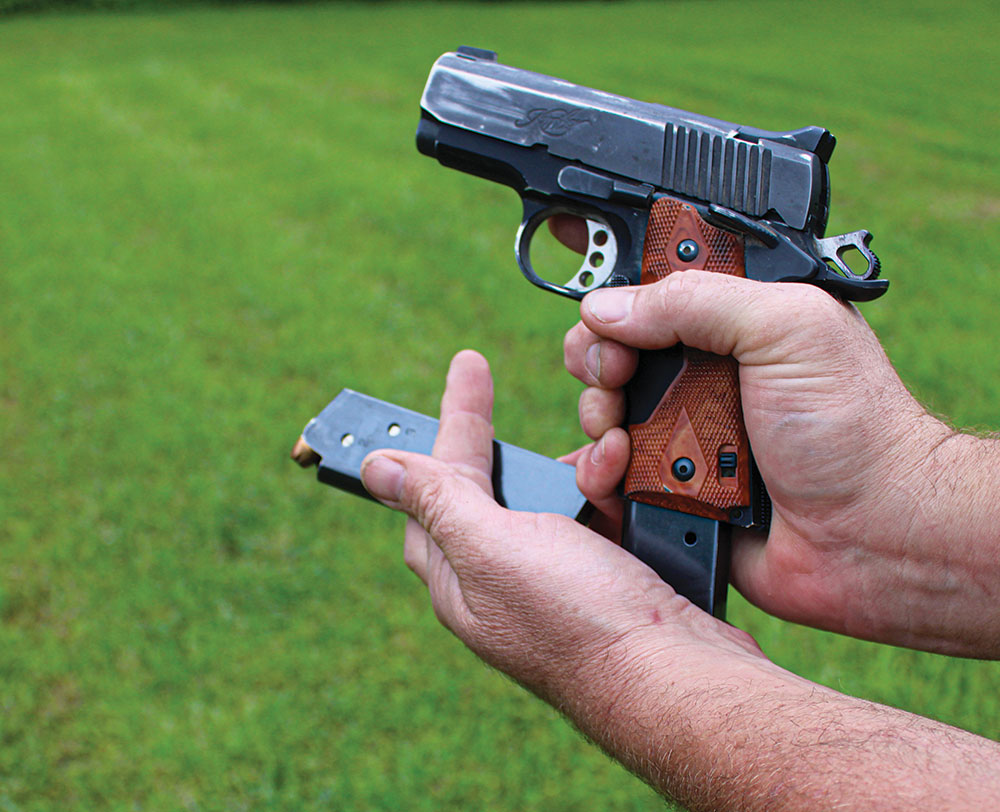
Magazines. Finally, always face magazines in the same direction.
Most experts recommend having the bullets facing forward, but it doesn’t really matter—as long as they’re the same every time. That way, the draw is consistent each and every time.
Those who want to be prepared have to do more than just hit a few bull’s-eyes at the range. Shooting paper targets isn’t fighting, and fighting is what one does on the street or when defending one’s home.
To be effective, skills must be learned and applied, and the mind must always be moving.
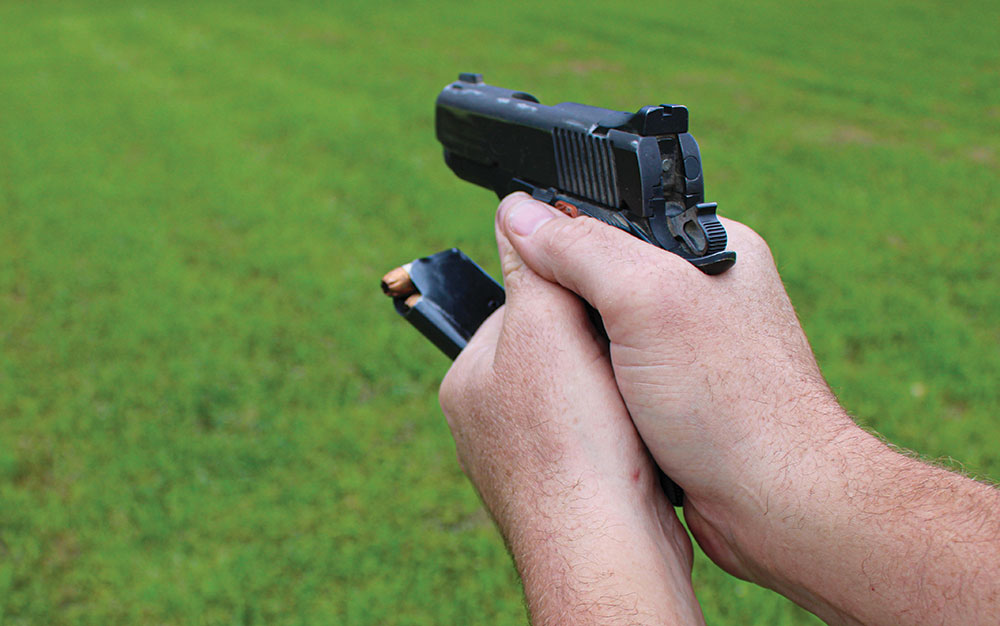
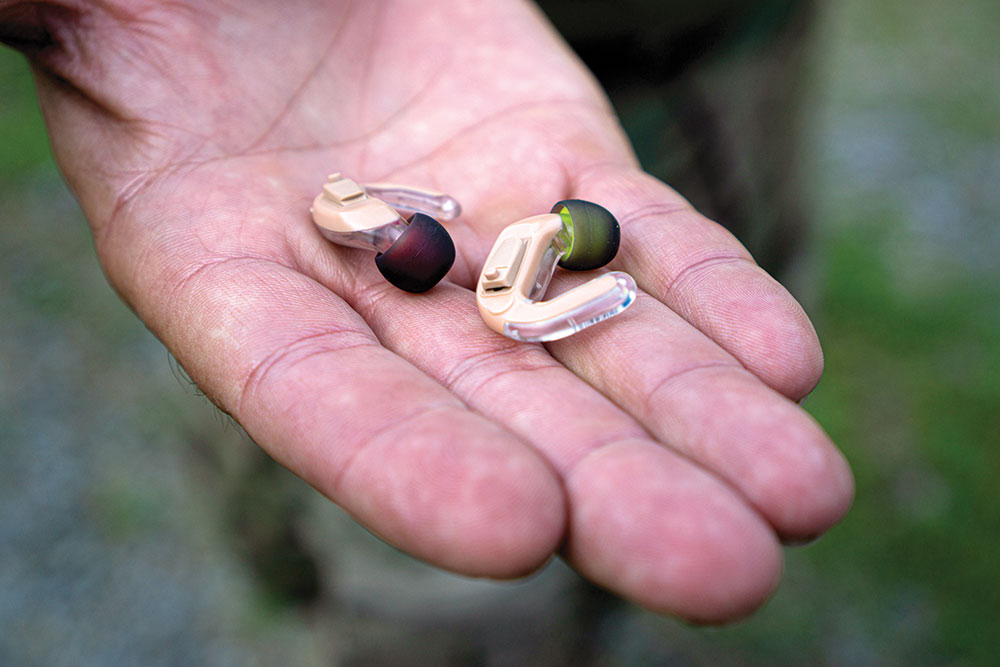
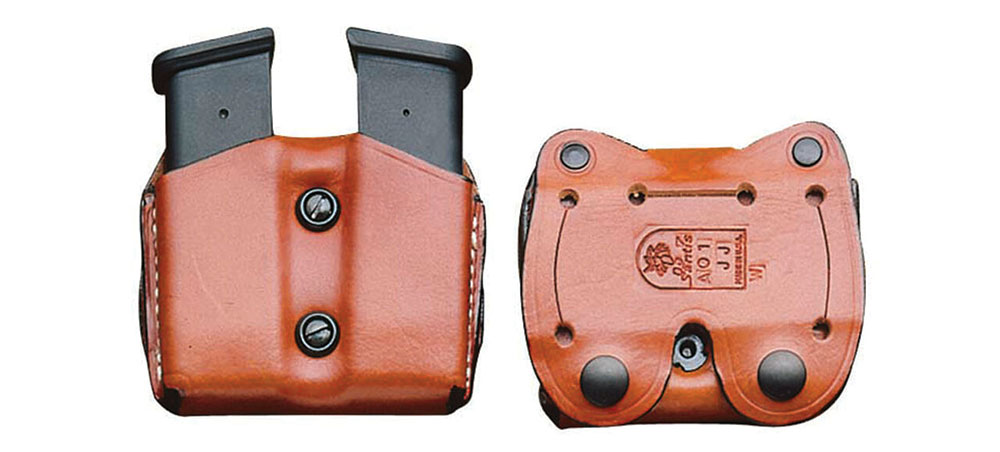
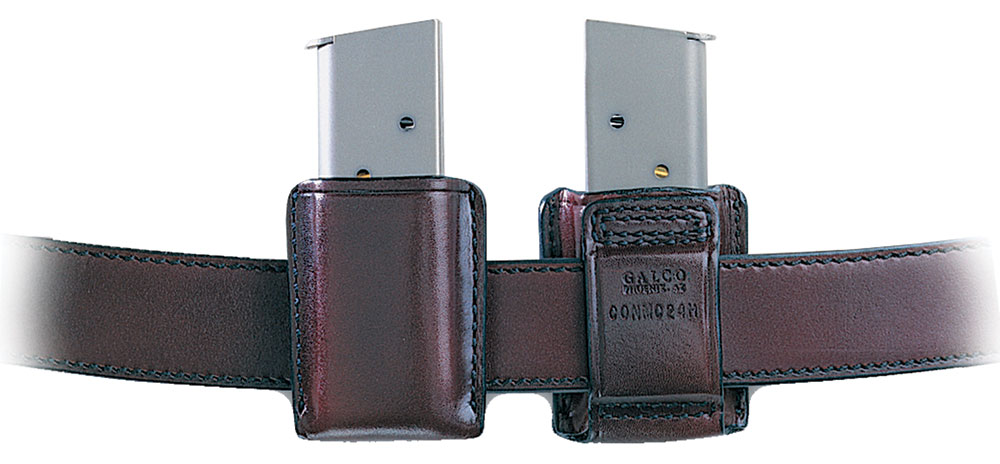
Extra Ammo
While many attacks end quickly—with just a shot or two taken or even a defender simply showing that they have the means to protect themselves—the possibility of a drawn-out fight is always there. For that reason, those who carry a concealed handgun should also carry extra ammunition.
There are a lot of different ways to carry spare magazines and speed loaders. There are leather and polymer mag holsters that carry one or two spares, as well as holsters with a magazine pouch. Speed loaders can be put into a pouch attached to a belt or even slipped into a pocket under a revolver.
Because I mostly carry a semi-auto, I’ve always liked the Galco Concealable Magazine Carrier. This leather case securely holds a single spare magazine on the belt in an optimal position—wherever I want it to sit. When I feel the need to carry two spares, I typically go with the DeSantis Double Magazine Pouch. Both are ambidextrous and come in high-quality leather in a couple of colors for under $70.
DeSantis Gunhide
DeSantisHolster.com
Galco International
GalcoGunLeather.com
Hear Your Training
It’s been a long time since electronic hearing protection hit the market. In the early days, these devices were intended for hunters and did a pretty good job of shutting down the sounds of a successful hunt. Unfortunately, they had some issues, such as battery life, tuning, comfort and especially directionality. It was really hard to tell where sounds were coming from.
As technology improved, so did electronic hearing protection, reaching today’s devices—such as the Tetra AlphaShield, which can be tuned to specific activities. Using Specialized Target Optimization (STO), these activities get as precise as waterfowl, turkey, deer and the shooting range. STO isolates and enhances the frequencies that hunters and shooters hear. In fact, Tetra can customize its devices for a person’s specific hearing levels.
I had the opportunity to try out the Range-Clay AlphaShield at a shooting event. For about six hours, these little ear plugs stopped the sounds of shots—both from my guns and others’, which ranged in caliber from .22 LR to .338 Lapua Magnum.
A version of this article first appeared in the September 2021 print issue of American Outdoor Guide.


